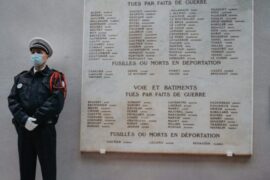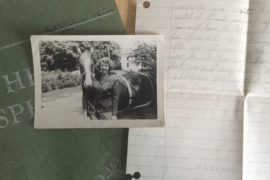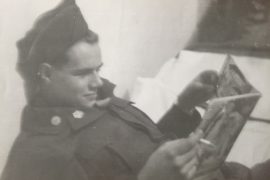
After a mid-month slump (something I’ve come to expect might happen now, and maybe because of that it just does…), I’m back in the saddle with writing a memoir in a month, at least the bones of the story.
I return to the bones, that inner framework; every story has a skeleton it hangs upon. The backbone of this memoir is a series of three trips made in one month to see my dying mother. All flashbacks and side stories hang from this time frame, the central story. But how to stick with just the bones and not get carried off with the flesh at this point- this is the challenging question.
I’ve pondered the pantser vs. plotter assessment and know that I’m not as much a plotter as a fly-by-the-seat-of-my-pants writer. But I also know that every story, including memoir, has a plot. I come at plot from the backside, trusting my characters, even in memoir, to carry the story through a satisfying arc. The memoirs I love read like novels.
Right now I can hardly put down Women’s Work: a Reckoning of Work and Home by journalist Megan K. Stack. It is unexpectedly riveting, keeping me away from my own work, but also inspiring great writing. https://www.newyorker.com/culture/personal-history/womens-work.
And now I’ve digressed from the backbone, but reading well-crafted stories, whether fiction or non, helps me return to own work, feeling for the bumpy spine.
So back to the bones. Today I return to the three trips that make-up my story structure, even while I allow myself to still scribble memories that might become scenes, flashbacks that fill in and add flesh to my story, building on my skeleton. But without the bones, I’ve got nothing to hold up the flesh, no way to walk this story to its conclusion.
I allow myself to veer and swerve, explore stories as they come to me, trust that this circuitous process will serve the better nature of this writing, that my process is mine alone, but not so uncommon as to be unworkable. Other writers struggle with process. I find this reassuring as I struggle. Who finds it easy to write … well?
I love the ellipsis. It allows me to digress, and leave space, a marker even for the rest of that story. Because, here’s the thing: I find it very difficult to just stay with the bones, just get the story down, finish the first draft and let it be crappy, knowing I’ll have to come back later and clean up the mess, expanding and condensing.
I used to think it was overwhelming, but now I find that thought indulgent. I don’t allow it. When I feel myself edging toward overwhelm, I make a decision. Overwhelm wants to throw me onto the couch to read more, or into some other activity, eating or drinking. Instead, I write into it. I allow the writing to be crappy and off base, believing this is how to get there.
After the mid-month slump, in which I got sidetracked writing a letter to my brother’s attorney about why I hadn’t cashed the check for 1/5 of what was left in my mother’s checking account when she died, back to the bones is a little bit like getting back on the horse— something my mother demanded I do, even with bones broken. It is an aphorism that serves me well long after giving up horses.
So now, back to the bones. I’ll try to write thin and spare, just get the skeleton of the story down, flesh it out later. But I know I will continue to slap on sinews and attach joints. That’s just the way my mind links and reconstructs the stories. Still, I’ve got to focus on the skeleton so I can meet my goal: Get the memoir written in the month of May. Get back on the horse. Only 7 days left!








Comments are closed.